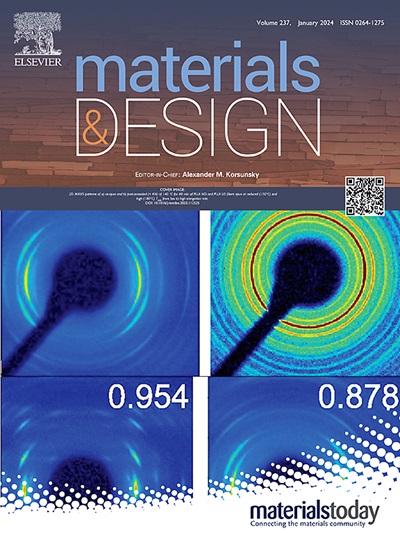Novel electromagnetic oscillation method for uniform grain refinement and mechanical properties enhancement of flat-shaped aerospace components
IF 7.6
2区 材料科学
Q1 MATERIALS SCIENCE, MULTIDISCIPLINARY
引用次数: 0
Abstract
Uniform fine grain structure is essential for enhancing the mechanical properties of flat-shaped aerospace components at the typical working temperature of 870 °C. However, the issue of grain coarsening after investment casting has remained intractable, necessitating reliable and efficient grain refinement methods. In this study, magnetic field distributions are simulated by ANSYS Maxwell, resulting in the design of three self-developed optimized electromagnetic oscillation (EMO) devices for grain refinement of different-sized flat-shaped aerospace components. The results show that the position of high magnetic field regions can be controlled by adjusting the iron core and hoop structure, ensuring magnetic field intensities > 70 KA/m in regions requiring grain refinement. The reliability of simulations is verified by successfully producing castings with uniform and fine equiaxed grains. Meanwhile, the tensile samples prepared with the EMO device under the 200A/20 Hz EMO process exhibit a 98.15 % reduction in grain size compared to direct casting, with strength properties slightly improved and elongation and section shrinkage significantly increased by 102.9 % and 110.9 %, respectively, at 870 °C. Grain refinement caused by EMO facilitated uniform deformation distribution, allowing samples to withstand larger deformations, causing the effect of deformation strengthening to outweigh the grain boundary strength reduction, thus enhancing strength properties.

求助全文
约1分钟内获得全文
求助全文
来源期刊

Materials & Design
Engineering-Mechanical Engineering
CiteScore
14.30
自引率
7.10%
发文量
1028
审稿时长
85 days
期刊介绍:
Materials and Design is a multi-disciplinary journal that publishes original research reports, review articles, and express communications. The journal focuses on studying the structure and properties of inorganic and organic materials, advancements in synthesis, processing, characterization, and testing, the design of materials and engineering systems, and their applications in technology. It aims to bring together various aspects of materials science, engineering, physics, and chemistry.
The journal explores themes ranging from materials to design and aims to reveal the connections between natural and artificial materials, as well as experiment and modeling. Manuscripts submitted to Materials and Design should contain elements of discovery and surprise, as they often contribute new insights into the architecture and function of matter.
 求助内容:
求助内容: 应助结果提醒方式:
应助结果提醒方式:


